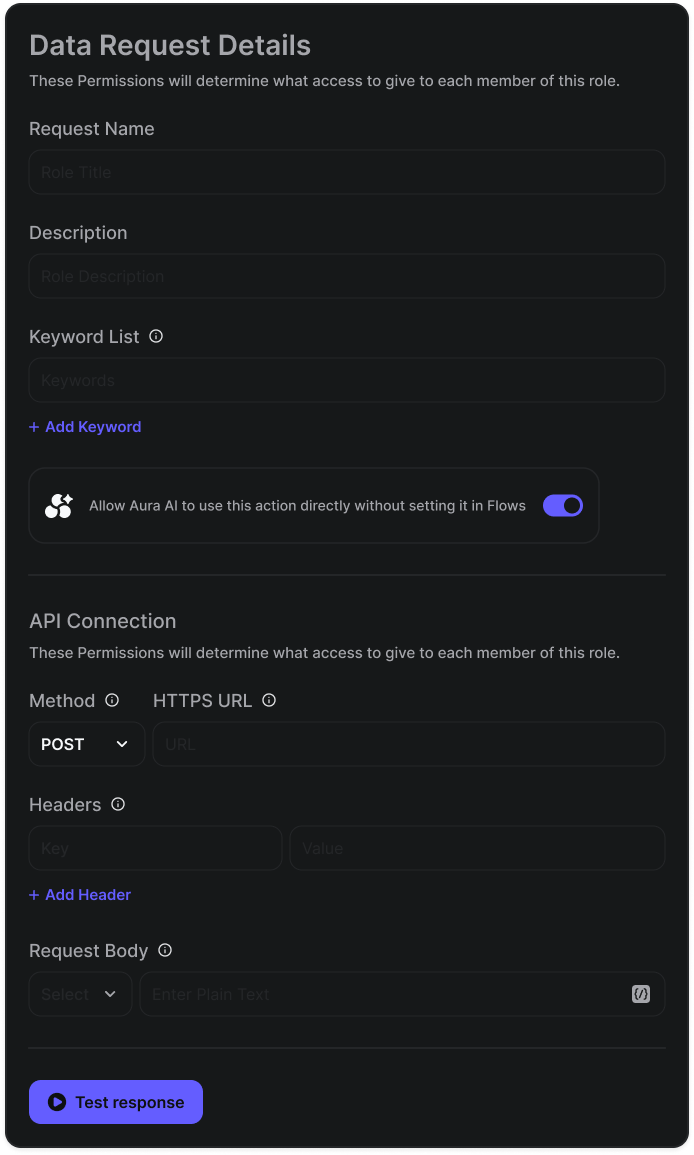Skip to main content What Are Data Requests? Data Requests allow Aura AI to retrieve external data when triggered by specific keywords or intents. This can include pulling user order statuses, account balances, shipment tracking info, or any other API-accessible resource.Example Use Cases:
“Where is my order?” → Fetch tracking status from shipping API.
“How many points do I have?” → Fetch loyalty balance from CRM.
How It Works:
You define an API endpoint in your settings.
Associate it with one or more trigger keywords.
When Aura AI detects a matching intent, it automatically sends a GET request and uses the response to craft its reply.
What Are Data Updates? Data Updates let Aura AI send data to external systems, effectively enabling actions like creating tickets, updating records, or changing a subscription status—all from within the chat.Example Use Cases:
“Cancel my subscription” → POST request to cancel endpoint.
“Update my phone number” → PATCH request to user profile API.
How It Works:
You configure the API endpoint and method (POST, PUT, PATCH, etc.).
Map the fields that should be sent dynamically from chat input.
Aura AI detects trigger phrases and performs the action with confirmation.
Configuration Steps
Go to Settings → Data Requests / Data Updates Click “Add New” and fill in:
Endpoint URL
Method (GET for requests, POST/PUT for updates)
Authorization headers (if required)
Dynamic variables (e.g., {{user_email}}, {{order_id}})
Set Trigger Keywords that will prompt Aura AI to use the connectionTest the Connection before going live
Best Practices
Keep endpoints scoped to essential functions to minimize exposure.
Use secure tokens or OAuth where possible.
Limit data output to what’s necessary for clarity and compliance.
Test with various phrasing to ensure Aura AI picks up on user intent effectively.
Coming Soon
Response formatting helpers for JSON parsingConditional logic for fallback repliesSupport for GraphQL and file upload endpoints
Next Steps 

